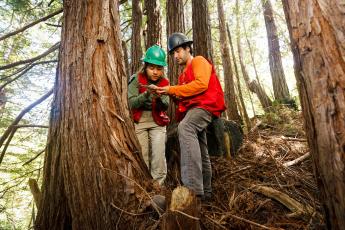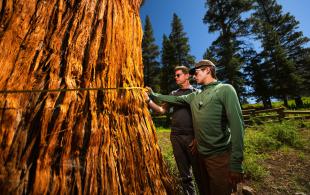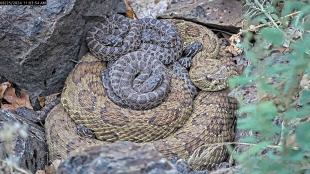Assistant Professor Takes on Vexing Global Problem of Dying Forests

An increasing body of peer reviewed science shows that forests worldwide are dying at an accelerated pace from prolonged exposure to drought and heat — along with other factors such as land use and wildfire — creating a global challenge. Cal Poly Assistant Professor Richard Cobb, whose research is focused on forest health, recently published findings from an international research study that he hopes will help address the issues resulting from future forest die-offs and lead to better forest management.
Cobb, who teaches in Cal Poly’s Natural Resources Management and Environmental Sciences Department, headed a collaboration of 20 researchers in the U.S. and internationally, in an effort to tackle the problem. They determined that having a strong framework of questions to ask and data to collect may help identify management tools that could potentially help minimize future forest mortality rates in some areas — despite the great diversity of forests around the world.
“Forest mortality events have impacted every forested continent at an alarming rate that threatens precious water, timber, recreational and cultural resources,” Cobb said. “If you’ve been to the Sierra Nevada recently, you’ve witnessed our local version of a global problem, with drought-stressed trees dying at a shocking pace.”
Cobb said the overarching goal of the study was to develop a new set of research questions and monitoring goals in an adaptive management framework known as a “State and Transition Modeling.” The method has been used by rangeland managers to cope with climate change and problems associated with overgrazing.
The new framework, he said, can be used by land management officials in county, state and federal roles as a roadmap when dealing with forest die-offs globally. For example, prioritizing goals at the onset of a forest die-off can help in preparing a plan to deal with the dead trees that will have the least ecological impact on the area in the future. The framework also provides a way for officials to convey why forest die-offs are occurring to the public and as a tool to request needed resources, Cobb said.
Cobb said the difficulty is that each global forest mortality event is driven by a unique set of factors. To address this, Cobb and colleagues compiled data from 17 forest mortality events in Africa, Australia, Europe, Central America, South America and North America.
“All of these systems are very different, but most of the mortality is driven or modified by heat and drought — conditions we expect to worsen over the coming decades and century,” he said. “While the solutions are complex, we can use existing science to make good decisions on how to manage forests and hopefully prevent or slow future instances of forest mortality.”
If cutting, planting, burning or other management actions during forest die-offs have resulted in greater mortality or ecological damage, that information can be used to help guide future management efforts.
The research paper, “Ecosystem Dynamics and Management After Forest Die-Off: A Global Synthesis with Conceptual State-and-Transition Models,” was published in the journal Ecosphere on Dec. 20. It can be viewed at http://onlinelibrary.wiley.com/doi/10.1002/ecs2.2034/full.




